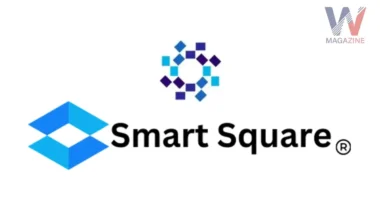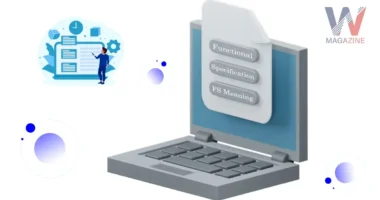Table of Contents
- What Is Manyroon?
- How Manyroon Works?
- Advantages of Manyroon
- Industry Applications
- Benefits of Using Manyroon
- Manyroon’s Impact on the Industry
- User Experience: Merging Innovation with Usability
- Understanding Innovation and Usability in UX
- Strategies for Merging Innovation with Usability
- Challenges in Balancing Innovation and Usability
- Case Studies: Successful Integration
- Best Practices for Designers
- Conclusion
Technology is always changing, and businesses need to keep up. One new tool helping them do this is called Manyroon. It’s a system that makes it easier for different parts of a business to work together, grow, and change when needed. Let’s explore what Manyroon is and how it can help in everyday terms.
What Is Manyroon?
Manyroon is a framework a kind of plan or structure that helps different computer systems and tools in a business connect and work together smoothly. Think of it like a universal adapter that lets various devices plug into each other, even if they weren’t originally designed to do so. This means information can flow freely between departments, making work faster and more efficient.
How Manyroon Works?
In today’s digital age, businesses require adaptable and efficient systems to stay competitive. Manyroon emerges as a comprehensive framework designed to streamline operations, integrate diverse technologies, and adapt to evolving industry needs. This article tells about the core functionalities of Manyroon, illustrating how it operates to enhance business processes across various sectors.
Core Functionality
At its essence, Manyroon serves as an integration platform that connects disparate systems, enabling seamless communication and data flow. By leveraging advanced technologies such as artificial intelligence (AI), cloud computing, and the Internet of Things (IoT), Manyroon facilitates real-time data exchange and automation, reducing manual intervention and enhancing operational efficiency.
Modular Architecture
Manyroon’s modular design allows businesses to customize and scale the framework according to their specific needs. Each module operates independently yet cohesively within the larger system, ensuring flexibility and ease of integration. This structure enables organizations to implement only the components relevant to their operations, optimizing resource utilization.
Interoperability
A standout feature of Manyroon is its ability to ensure interoperability among various platforms, applications, and devices. This capability allows businesses to integrate existing systems without the need for extensive modifications, preserving prior investments and facilitating a smoother transition to enhanced operations.
Advantages of Manyroon
In today’s fast-paced digital world, businesses need tools that help them work smarter, not harder. One such tool is Manyroon, a framework designed to streamline operations, reduce costs, and adapt to changing needs. Let’s discuss about the key advantages that Manyroon offers to businesses across different sectors.
Enhanced Efficiency
Manyroon connects various systems within a business, allowing them to communicate seamlessly. This integration reduces the need for manual data entry and minimizes errors. For instance, when a sale is made, inventory levels can automatically update, and the finance department can instantly access the transaction details. Such automation accelerates processes and frees up employees to focus on more strategic tasks.
Cost Savings
By automating routine tasks and improving system integration, Manyroon helps businesses cut down on operational costs. There’s less need for manual oversight, which means fewer resources are spent on repetitive tasks. Additionally, the improved accuracy reduces costly mistakes, and the scalability of Manyroon ensures that businesses can grow without significant additional investments in infrastructure.
Improved Decision-Making
With all systems interconnected, data flows freely and is consolidated in real-time. This comprehensive view allows managers to make informed decisions quickly. For example, understanding customer purchasing patterns can help in tailoring marketing strategies, while real-time inventory data can inform procurement decisions.
Scalability
As businesses expand, their operational needs become more complex. Manyroon is built to scale alongside the business. Whether it’s handling increased data volumes or integrating new departments and processes, Manyroon’s flexible architecture ensures that growth doesn’t come with growing pains.
Adaptability
The business landscape is ever-evolving, with new technologies and processes emerging regularly. Manyroon’s adaptable design means it can easily incorporate new tools and adjust to changing workflows. This flexibility ensures that businesses remain competitive and can swiftly respond to market changes.
Enhanced Security
Data security is paramount in today’s digital age. Manyroon incorporates advanced security protocols to protect sensitive information. By centralizing data and controlling access through integrated systems, it reduces the risk of breaches and ensures compliance with data protection regulations.
Better User Experience
For both employees and customers, a seamless experience is crucial. Manyroon ensures that internal systems work harmoniously, reducing frustrations caused by disjointed processes. For customers, this translates to faster service, accurate information, and a more responsive business overall.
Industry Applications
Healthcare
In the healthcare sector, Manyroon can integrate patient records, appointment scheduling, and billing systems. This integration ensures that healthcare providers have a holistic view of patient information, leading to better care and streamlined administrative processes.
Education
Educational institutions can use Manyroon to connect learning management systems, student databases, and administrative tools. This unified approach enhances the learning experience, simplifies administrative tasks, and provides educators with valuable insights into student performance.
Manufacturing
Manufacturers benefit from Manyroon by linking supply chain management, production processes, and quality control systems. This connectivity ensures efficient operations, timely production, and consistent product quality.
Entertainment
In the entertainment industry, Manyroon facilitates the integration of content creation tools, distribution platforms, and audience analytics. This synergy allows for efficient content production, targeted distribution, and a deeper understanding of audience preferences.
Benefits of Using Manyroon
- Efficiency: By connecting different systems, tasks that used to take hours can now be done in minutes.
- Cost Savings: Automating processes reduces the need for manual work, saving money on labor.
- Better Decision-Making: Having all data in one place allows for quicker and more informed decisions.
- Flexibility: Businesses can easily add new tools or change processes without starting from scratch.
Manyroon’s Impact on the Industry
In today’s rapidly evolving digital landscape, businesses are constantly seeking innovative solutions to enhance efficiency, adaptability, and scalability. One such groundbreaking framework making waves across various industries is Manyroon. Designed to streamline operations and foster seamless integration, Manyroon is transforming the way organizations operate.
Revolutionizing Business Integration
At its core, Manyroon serves as a comprehensive framework that facilitates better connectivity and efficiency across different platforms and industries. By integrating various systems, it ensures efficient communication, data transfer, and operation automation. This holistic approach to business integration allows companies to break down silos, enabling departments to work cohesively towards common goals.
Enhancing Interconnectivity
One of the standout features of Manyroon is its ability to enhance interconnectivity within an organization. By bridging disparate systems and platforms, Manyroon ensures that information flows seamlessly across departments. This interconnected environment not only improves communication but also accelerates decision-making processes, leading to increased productivity and efficiency.
Scalability for Growing Businesses
As businesses expand, the need for scalable solutions becomes paramount. Manyroon addresses this by offering a flexible framework that grows with the organization. Whether it’s accommodating an increasing number of users or integrating additional systems, Manyroon’s scalable architecture ensures that businesses can adapt without overhauling their existing infrastructure.
Adaptability in a Dynamic Market
In an era where market conditions and consumer demands are constantly shifting, adaptability is key. Manyroon’s design allows businesses to swiftly adjust their operations in response to these changes. By facilitating quick integration of new tools and processes, Manyroon empowers organizations to remain agile and competitive in a dynamic market landscape.
User Experience: Merging Innovation with Usability
In today’s rapidly evolving digital landscape, creating products that are both innovative and user-friendly is paramount. User Experience (UX) design plays a crucial role in achieving this balance, ensuring that technological advancements do not compromise usability. This article tells about into the significance of merging innovation with usability in UX design, highlighting strategies, challenges, and best practices.
Understanding Innovation and Usability in UX
Innovation in UX refers to introducing novel ideas, technologies, or methods to enhance user interaction and satisfaction. Usability, on the other hand, focuses on the ease with which users can navigate and interact with a product. While innovation brings freshness and competitiveness, usability ensures that the product remains accessible and intuitive.
Balancing these two aspects is essential. Overemphasis on innovation can lead to complex interfaces that confuse users, while focusing solely on usability might result in outdated or less competitive products.
Strategies for Merging Innovation with Usability
1. User-Centered Design
Placing users at the core of the design process ensures that innovations align with user needs and preferences. By conducting user research, designers can gather insights into user behaviors, expectations, and pain points, guiding the development of innovative yet user-friendly solutions.
2. Iterative Testing and Feedback
Implementing a cycle of prototyping, testing, and refining allows designers to assess the impact of innovative features on usability. User feedback is invaluable in identifying areas where innovation enhances or hinders the user experience.
3. Familiarity with a Twist
Introducing new features within familiar frameworks helps users adapt more easily. For instance, integrating novel functionalities into commonly used interface patterns can reduce the learning curve and enhance acceptance.
4. Accessibility Considerations
Ensuring that innovations are accessible to users with diverse abilities is crucial. Designers should adhere to accessibility standards, such as the Web Content Accessibility Guidelines (WCAG), to create inclusive experiences. This includes providing alternative navigation methods, readable text, and accommodating assistive technologies.
Challenges in Balancing Innovation and Usability
Merging innovation with usability presents several challenges:
- Complexity vs. Simplicity: Innovative features can introduce complexity. Designers must simplify these features to maintain usability.
- User Resistance: Users may resist change, especially if new features disrupt established workflows. Gradual introduction and clear communication can mitigate this.
- Resource Constraints: Balancing innovation and usability often requires additional time and resources for research, testing, and refinement.
Case Studies: Successful Integration
AI-Driven Interfaces
Companies like ArtVersion emphasize the importance of merging AI innovations with usability. By focusing on intuitive interactions and robust error-handling mechanisms, they ensure that AI products are both advanced and user-friendly.
Journey-Centric Experiences
Organizations are increasingly merging UX and Customer Experience (CX) into a unified function, focusing on the entire user journey. This holistic approach ensures that innovative features enhance the overall experience rather than isolated interactions.
Best Practices for Designers
- Collaborative Approach: Involving cross-functional teams, including developers, marketers, and users, fosters diverse perspectives, leading to balanced innovations.
- Continuous Learning: Staying updated with emerging technologies and user behavior trends enables designers to integrate relevant innovations effectively.
- Empathy: Understanding user emotions and motivations helps in designing experiences that resonate, ensuring that innovations add genuine value.
Conclusion
Manyroon is like a smart assistant for businesses, helping different parts work together smoothly. It’s adaptable, scalable, and makes operations more efficient. As technology continues to evolve, tools like Manyroon will be essential in helping businesses stay ahead.









